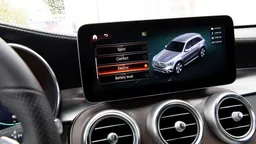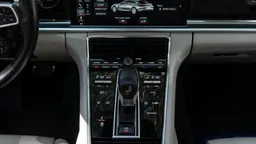Registrations in Europe of Dodge RAM pick-up trucks rose 20% last year, new data analysed by Transport & Environment (T&E) shows. A coalition of consumer, safety and environmental groups, including T&E, has written to the European Commission, calling on the EU’s executive body to close the loophole that allows these dangerous and heavily polluting vehicles onto European roads.
Nearly 5,000 Dodge RAMs were brought into Europe in 2023, up 20% compared to 2022, according to newly-released data from the European Environment Agency[1]. There are now at least 20,000 Dodge RAMs on Europe’s roads.
The EU has strict vehicle standards to reduce the danger of road vehicles and to limit their emissions. However, dangerous and polluting US pickup trucks, such as Dodge RAMs, are not required to comply with such standards as they are imported through a back-door channel called “Individual Vehicle Approval”.
Individual Vehicle Approval (IVA) allows vehicles to bypass basic EU environmental and safety regulations for cars. Originally this was intended for truly ‘one-off’ adapted or specialised vehicles such as those for the mobility impaired or for emergency services. The system is now being exploited to import large numbers of US pick-up trucks, says T&E. Notably, these vehicles are not required to comply with the 2019 EU General Safety Regulation (GSR), on-road tests for air pollution or the EU car and van CO2 standards.
CO2 emissions from Dodge RAMs range between 300g and 900g per kilometre - around three to nine times higher than the average for newly-sold cars. Safety features mandatory for all newly sold cars and vans from 7 July 2024, are not required in Dodge RAMs and other IVA-imported vehicles[2].
James Nix, vehicles manager at T&E, said: “Pickup trucks like the Dodge RAM have no place on European streets. Not only are they heavily polluting, they are also deadly. We need to slim down the cars on our roads, not give a free pass to the biggest and most dangerous. The EU needs to close the loophole that allows these monsters onto our streets.”
In a collision, a pick up truck is almost three times more likely to kill a pedestrian or cyclist than a normal car. The high bonnets of pick-up trucks put children, women and the elderly at even greater risk.
The group of organisations - T&E, European Transport Safety Council, European Cyclists’ Federation, consumers’ federation BEUC, Clean Cities, Eurocities, POLIS, and the International Federation of Pedestrians - calls on the EU to close the loophole which was never intended to be a large-scale back-door import channel to bypass air quality, climate and safety requirements.
The EU’s inaction stands in stark contrast to the steps being taken by progressive cities, say the organisations. Already, Paris, Lyon, Grenoble, Koblenz and Tübingen have decided to vary parking charges by vehicle weight or size.
ENDS
Note to editors
[1] European Environmental Agency (2024), vehicle CO2 data. For data from the 5 years from 2019 to 2023 inclusive, please see the Annex to the letter.
[2] The following safety features are mandatory from 7 July 2024 for new cars & vans - but not vehicles approved under IVA:
Improved crash protection for vulnerable road users (energy-absorbing bonnets and front bumpers to mitigate injury severity in collisions)
Automated Emergency Braking (an automatic system to stop the driver crashing into the rear of another vehicle)
Lane Departure Warning (alerting drivers when the vehicle is about to drift outside the lane)
Intelligent Speed Assistance (helping drivers stay within the speed limit)
Drowsiness and distraction warning (alerting drivers who become sleepy or inattentive)
Event data recorders (helping investigate crashes)
Reversing detection (alerting drivers to the presence of pedestrians and other vulnerable road users behind the vehicle), and
Emergency Stop Signal (alerting other drivers when the vehicle is rapidly reducing speed).


